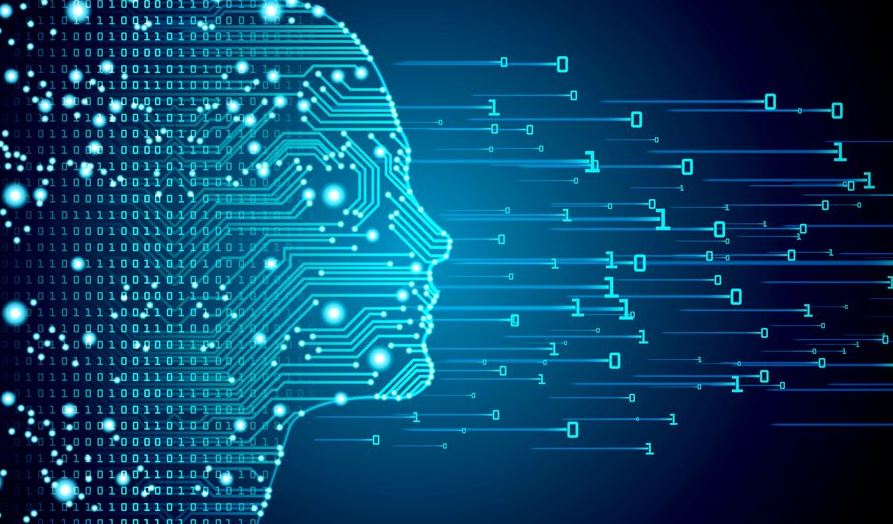Note4Students
From UPSC perspective, the following things are important :
Prelims level: AI chips
Mains level: Read the attached story

Market leader Nvidia recently announced its H100 GPU (graphics processing unit), which is said to be one of the world’s largest and most powerful Artificial Intelligence (AI) accelerators, packed with 80 billion transistors.
What are AI chips?
- AI chips are built with specific architecture and have integrated AI acceleration to support deep learning-based applications.
- These chips, with their hardware architectures and complementary packaging, memory, storage and interconnect technologies, make it possible to infuse AI into a broad spectrum of applications.
- There are different types of AI chips such as application-specific integrated circuits (ASICs), field-programmable gate arrays (FPGAs), central processing units (CPUs) and GPUs, designed for diverse AI applications.
What is Deep Learning?
- Deep learning, more commonly known as active neural network (ANN) or deep neural network (DNN), is a subset of machine learning and comes under the broader umbrella of AI.
- It combines a series of computer commands or algorithms that stimulate activity and brain structure.
- DNNs go through a training phase, learning new capabilities from existing data.
- DNNs can then inference, by applying these capabilities learned during deep learning training to make predictions against previously unseen data.
- Deep learning can make the process of collecting, analysing, and interpreting enormous amounts of data faster and easier.
Utility of AI chips
- The adoption of Artificial Intelligence (AI) chips has risen, with chipmakers designing different types of these chips to power AI applications such as:
- Natural language processing (NLP)
- Computer vision
- Robotics, and
- Network security across a wide variety of sectors, including automotive, IT, healthcare, and retail
Are they different from traditional chips?
- When traditional chips, containing processor cores and memory, perform computational tasks, they continuously move commands and data between the two hardware components.
- These chips, however, are not ideal for AI applications as they would not be able to handle higher computational necessities of AI workloads which have huge volumes of data.
- Although, some of the higher-end traditional chips may be able to process certain AI applications.
- In comparison, AI chips generally contain processor cores as well as several AI-optimised cores that are designed to work in harmony when performing computational tasks.
- The AI cores are optimised for the demands of heterogeneous enterprise-class AI workloads with low-latency inferencing, due to close integration with the other processor cores.
What are their applications?
- Use of AI chips for NLP applications has increased due to the rise in demand for chatbots and online channels such as Messenger, Slack, and others
- They use NLP to analyse user messages and conversational logic.
- Then there are chipmakers who have built AI processors designed to help customers achieve business insights at scale across banking, finance, trading, insurance applications and customer interactions.
What firms are making these chips?
- Nvidia Corporation, Intel Corporation, IBM Corporation, Samsung Electronics Co., Ltd, Qualcomm Technologies, Inc., and Apple Inc. are some of the key players in the AI chip market.
Major breakthroughs
- Nvidia, which dominates the market, offers a wide portfolio of AI chips including Grace CPU, H100 and its predecessor A100 GPUs.
- It is capable of handling some of the largest AI models with billions of parameters.
- The company claims that twenty H100 GPUs can sustain the equivalent of the entire world’s internet traffic.
- IBM’s new AI chip, announced last year, can support financial services workloads like fraud detection, loan processing, clearing and settlement of trades, anti-money laundering and risk analysis.
Scale of global market
- The Worldwide AI chip industry accounted for $8.02 billion in 2020.
- It is expected to reach $194.9 billion by 2030, growing at a compound annual growth rate (CAGR) of 37.4% from 2021 to 2030.
What can be expected in the future?
- AI company Cerebras Systems set a new standard with its brain-scale AI solution, paving the way for more advanced solutions in the future.
- Its CS-2, powered by the Wafer Scale Engine (WSE-2) is a single wafer-scale chip with 2.6 trillion transistors and 8,50,000 AI optimised cores.
- The human brain contains on the order of 100 trillion synapses, the firm said, adding that a single CS-2 accelerator can support models of over 120 trillion parameters (synapse equivalents) in size.
- Another AI chip design approach, neuromorphic computing, utilises an engineering method based on the activity of the biological brain.
- An increase in the adoption of neuromorphic chips in the automotive industry is expected in the next few years.
UPSC 2023 countdown has begun! Get your personal guidance plan now! (Click here)
Get an IAS/IPS ranker as your 1: 1 personal mentor for UPSC 2024
